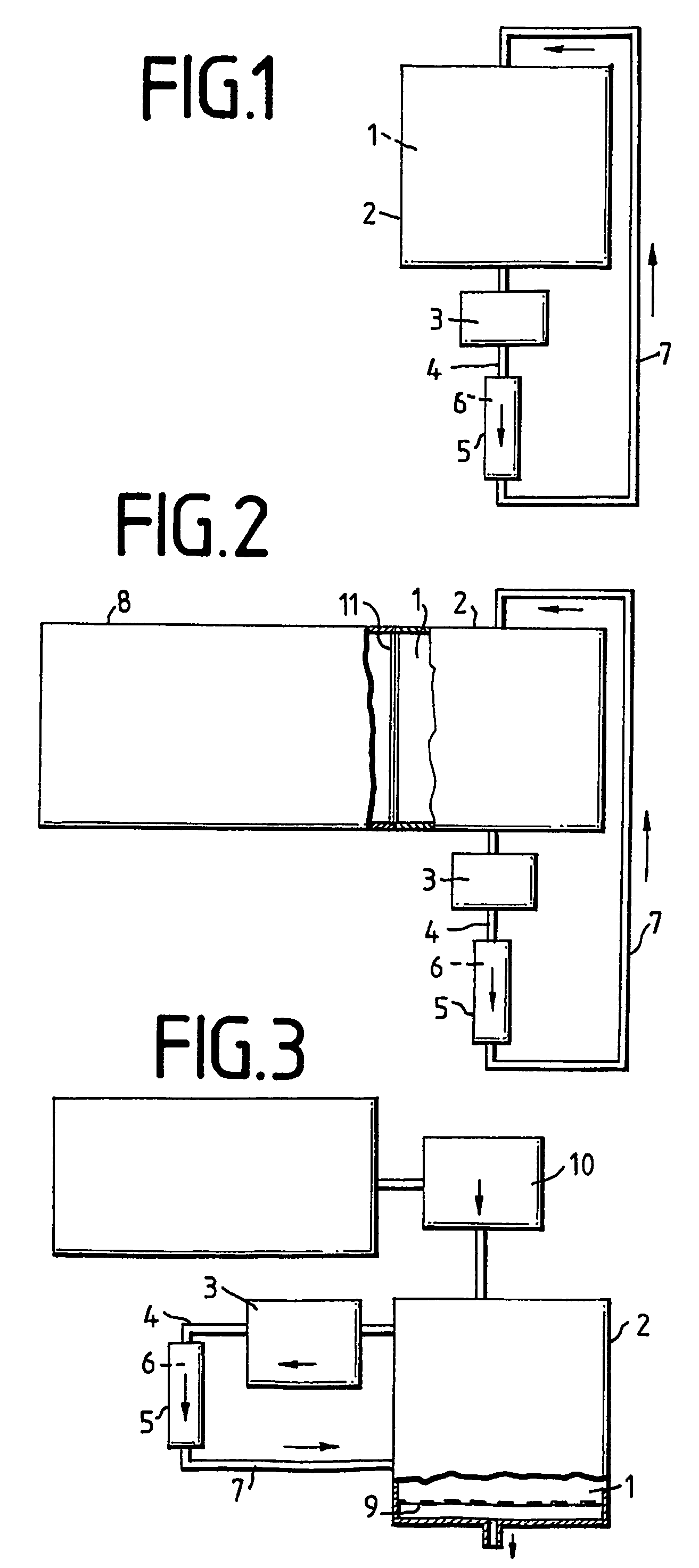Method for gene expression
a cell-free transcription/translation and gene technology, applied in the field of gene expression in a cell-free transcription/translation system, can solve the problems of unsatisfactory endogenous proteins, translated proteins remain dissolved in the reaction vessel, and no information about the amount and/or activity of generated proteins can be obtained
- Summary
- Abstract
- Description
- Claims
- Application Information
AI Technical Summary
Benefits of technology
Problems solved by technology
Method used
Image
Examples
example
[0038]A coupled transcription / translation was performed in a semi-continuous cell-free reactor according to FIG. 2 for 20 hours at 30° C. The reaction chamber 2 had a volume of 750 μl, and in connection with volumes of the pump 3, the inlet 4, outlet 7, and of the column, a total volume of the reaction solution 1 of 2,150 μl resulted. The reaction solution for the coupled transcription / translation system is based on an E.coli S30 lysate (strain D10). The used plasmid was pHMFH+StII. The starting vector for this plasmid was pUC18. Herein, the SphI / EcoRI fragment from pET3d (Novagen) was cloned. Into this modified vector, the FABP gene (fatty acid binding protein) was cloned over NcoI / BamHI. The used transcription / translation system has been described by Zubay, G. (Annu. Rev. Genet. 7, 267-287), and was completed with 500 U / ml T7 phage RNA polymerase (Stratagene, La Jolla, Calif.) and 200 μM L[14C]-leucin (25 dpm / pmol, obtainable from 150 μM “cold” and 50 μM “hot” leucin, Amersham (Bi...
PUM
| Property | Measurement | Unit |
|---|---|---|
| temperature | aaaaa | aaaaa |
| total volume | aaaaa | aaaaa |
| total volume | aaaaa | aaaaa |
Abstract
Description
Claims
Application Information
 Login to View More
Login to View More - R&D
- Intellectual Property
- Life Sciences
- Materials
- Tech Scout
- Unparalleled Data Quality
- Higher Quality Content
- 60% Fewer Hallucinations
Browse by: Latest US Patents, China's latest patents, Technical Efficacy Thesaurus, Application Domain, Technology Topic, Popular Technical Reports.
© 2025 PatSnap. All rights reserved.Legal|Privacy policy|Modern Slavery Act Transparency Statement|Sitemap|About US| Contact US: help@patsnap.com


